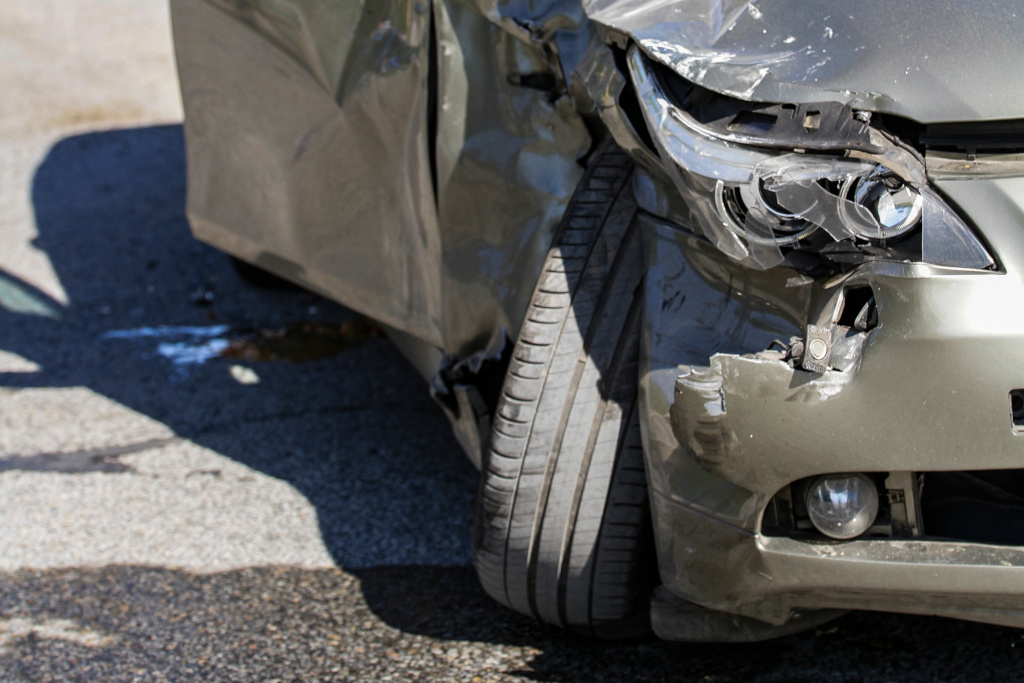In the insurance world, you often hear the words liability and full coverage. Both are important industry terms, but they can be confusing, especially since the latter includes the former as a package deal. As a driver, you should know what they are and how they differ. This knowledge comes in handy when you’re shopping for a policy.
In this article:
- Liability and full-coverage differences
- Liability insurance basics
- Full coverage basics
- Who needs one over the other
- Average US rates for both
- Frequently asked questions
Differences Between Liability and Full-Coverage
Below is a table listing some of the main differences between both terms. You’ll notice that full coverage includes liability but is not a type of policy itself. On the other hand, it’s a form of insurance that most states require you to purchase.
| Liability | Full Coverage |
|---|---|
| Is a type of car insurance | Not an actual type of insurance |
| Is usually a state requirement | Not a state requirement, but may be required by lenders |
| Protects drivers from paying the other party’s damages | Includes collision |
| Doesn’t cover your own car’s damages | Includes comprehensive |
| Doesn’t cover your own injuries | Covers injuries in some cases |
| Covers both property damage and bodily injury | Includes liability |
Liability Basics
Liability insurance protects you if you’re at fault in an accident and must pay the damages. It will pay for the other driver’s expenses so you don’t have to. Most states mandate this coverage as a requirement for all drivers with limits set low enough to be easily affordable.
It’s important to note that liability is considered the absolute minimum protection a driver needs. This type of coverage doesn’t pay to fix your car or pay your medical bills following a crash. Next, we break down both what this insurance covers as well as what it doesn’t.
What It Covers
Liability insurance covers a few vital things. Remember that it only kicks in when you’re at fault in an accident. Here’s a list of what’s covered:
- Property damage to the other person’s car
- Other property damage (light posts, streetlights, buildings, etc.)
- Bodily injury that the other party sustains e.g., medical bills, lost wages, EMT fees, etc.
What It Doesn’t
Liability insurance doesn’t cover any damage to your car or any injuries you may have after an accident. It only protects you from having to pay in full for the other person’s damages/injuries. Coverages like MedPay and personal injury protection (PIP) will pay your medical bills. Also, collision pays for damages to your car in an at-fault accident.
Full-Coverage Basics
Full-coverage is an insurance industry term used when carriers talk about a policy that includes, at a minimum, the following:
- Collision
- Comprehensive
- Liability
You’re not just limited to the three options above. Other selections are available as well, such as:
- Medical payments (MedPay)
- Personal injury protection (PIP)
- Guaranteed asset protection (Gap)
- Uninsured and underinsured motorist (UM and UIM)
What It Covers
Since there technically isn’t a full-coverage product, there are no protections to mention. But, the three insurance products that it includes protect you from:
- Collisions with other cars, even if your it’s sitting in a parking lot.
- Theft
- Vandalism
- Natural disasters and other random events that damage your car
- Accidents where you’re liable to pay for damages/injuries
Who Needs One Over the Other?
Most states require you to have at least some amount of liability. This is because it, at the very least, protects the other party from having to pay for any damages. Be sure to check your state’s laws to see that you have the proper amount of insurance.
Full coverage insurance is usually a requirement if you’re financing your car. Your lender will normally require you to buy it. They do this to protect their financial stake If you were to buy your vehicle outright, you wouldn’t need to worry about this. Be aware of this if you’re thinking of leasing or financing.
Besides state requirements, it’s a good idea to protect yourself from as many risks as possible. Not doing so could result in you having to shell out loads of cash out of pocket to pay for an unforeseen accident.
US Average Liability and Full-Coverage Rates
The table below includes average national liability and full-coverage rates side-by-side ranging from 2012 to 2019. It’s worth noting that this is the most recent actual cost data we can gather from the Insurance Information Institute (III).
| Year | Liability | Full-Coverage |
|---|---|---|
| 2012 | $503.88 | $814.99 |
| 2013 | $518.49 | $841.23 |
| 2014 | $530.51 | $866.31 |
| 2015 | $538.73 | $889.01 |
| 2016 | $566.51 | $935.80 |
| 2017 | $611.12 | $944.36 |
| 2018 | $644.11 | $1,056.55 |
| 2019 | $650.35 | $1,070.47 |
As you can see in the table above, liability accounts for nearly two-thirds of the total cost of full coverage. In addition, the price of each type of insurance grew steadily between 2012 and 2019. In that period, basic policy expenses rose from $518.49 to $650.35, or 22.5%. These premiums rose even faster, growing from $814.99 in 2012 to $1,070.47 by 2019, or 23.8%.
Average Rates by State
Where you call home is one of the most important auto insurance rate factors. The reason is that your ZIP code reveals to insurers the risks associated with your area. Liability and full coverage almost always cost more in urban settings where more claims are filed because of accidents, crime, and weather-related damages.
The table below displays average liability and full coverage rates in all 50 states, as well as the District of Columbia as of 2019. The costs below come from the III and were initially sourced by the National Association of Insurance Commissioners (NAIC). In 2019, the national average for a basic policy was $650.35, while the cost to fully cover a car averaged $1,070.47.
| State | Liability | Full Coverage |
|---|---|---|
| Alabama | $527.20 | $932.14 |
| Alaska | $584.90 | $991.09 |
| Arizona | $662.55 | $1,063.93 |
| Arkansas | $484.37 | $897.92 |
| California | $627.77 | $1,051.79 |
| Colorado | $704.82 | $1,174.87 |
| Connecticut | $799.45 | $1,237.55 |
| District of Columbia | $819.36 | $1,440.58 |
| Delaware | $897.87 | $1,289.93 |
| Florida | $997.20 | $1,414.17 |
| Georgia | $829.86 | $1,259.49 |
| Hawaii | $478.83 | $839.87 |
| Idaho | $436.66 | $738.10 |
| Illinois | $522.11 | $939.64 |
| Indiana | $444.98 | $777.05 |
| Iowa | $350.31 | $714.86 |
| Kansas | $426.14 | $818.99 |
| Kentucky | $609.98 | $935.61 |
| Louisiana | $1,023.91 | $1,557.22 |
| Maine | $375.40 | $696.37 |
| Maryland | $749.18 | $1,236.61 |
| Massachusetts | $664.92 | $1,182.69 |
| Michigan | $979.47 | $1,495.94 |
| Minnesota | $502.32 | $892.17 |
| Mississippi | $544.43 | $975.58 |
| Missouri | $527.59 | $929.91 |
| Montana | $437.69 | $834.86 |
| Nebraska | $431.71 | $807.30 |
| Nevada | $925.71 | $1,292.52 |
| New Hampshire | $442.52 | $864.35 |
| New Jersey | $958.31 | $1,395.53 |
| New Mexico | $584.25 | $932.67 |
| New York | $932.46 | $1,445.30 |
| North Carolina | $392.06 | $741.70 |
| North Dakota | $312.30 | $703.73 |
| Ohio | $447.86 | $802.72 |
| Oklahoma | $504.79 | $908.95 |
| Oregon | $684.81 | $990.00 |
| Pennsylvania | $548.58 | $992.33 |
| Rhode Island | $918.30 | $1,382.64 |
| South Carolina | $715.26 | $1,114.90 |
| South Dakota | $337.11 | $745.33 |
| Tennessee | $479.43 | $863.39 |
| Texas | $650.17 | $1,143.85 |
| Utah | $615.15 | $954.14 |
| Vermont | $374.06 | $785.37 |
| Virginia | $491.51 | $861.18 |
| Washington | $705.11 | $1,066.84 |
| West Virginia | $515.20 | $946.03 |
| Wisconsin | $421.21 | $767.42 |
| Wyoming | $365.08 | $776.22 |
Frequently Asked Questions
Which forms of auto insurance do I need to legally drive?
Liability is required in nearly every state to drive legally. However, limits vary by state but are usually low. Be sure to look at your state’s laws to know which types of insurance and how much of each you need.
Do I need all three types of insurance to be safe?
Legally, unlike liability, you don’t need full coverage to drive. But it can be a smart move. This is because it gives you a broader range of protection than a basic policy. However, you may need it when financing or leasing. It helps you avoid paying lots of money out of pocket if a random accident damages your car.
What does it mean to be fully covered?
Full coverage means that you have at least the three major types of auto insurance on your policy:
- Collision
- Comprehensive
- Liability
These aren’t the only coverage types you can add, though. Check with your agent to go over the entire list of options that your carrier can provide you.
Is full coverage better than liability?
While liability is the only auto insurance that most states require drivers to carry, most people prefer more protection. The former only shields you from having to pay property damage/bodily injury costs for the other party in an accident. A full coverage policy is just that. It defends you from:
- Damage to your own car in an accident
- Vandalism, theft, natural disasters, and other random events that comprehensive covers.
Liability is important, but it only covers. On the other hand, full coverage gives you the whole spectrum of protection, making it the more complete choice.


